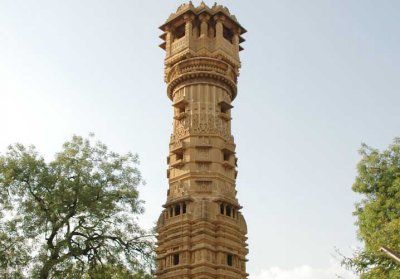Ahmedabad
Gandhi Ashram (Sabarmati Ashram) | |
For many years Ahmedabad was the center of Mahatma Gandhi's non-violent struggle for India's independence. He learnt the art of spinning and weaving, and soon the ashram began to buzz with khadi, not just as a way of producing clothes, but also as a way of thought. You can get a sense of his life, the history of the movement and those who worked alongside him, at the Gandhi Smarak Sangrahalaya, a small museum that includes excellent pictorial and written documentation, a library of Gandhian literature and paintings, and an immense archive of letters written by Gandhiji, every single one on the back of used paper. |
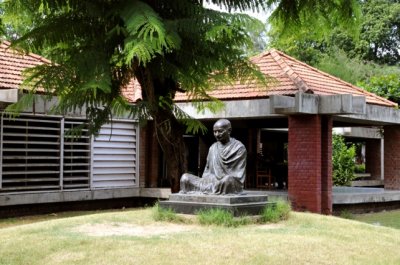
Akshardham Akshardham is majestic, intricately carved stone structure which stands amid sprawling gardens. Inspiring episodes and incidents from the glorious history of Sanatan Dharma are presented in sound and light form for the benefit of the visitors. The wisdom of the Vedas, the epics, the Puranas is depicted on a crowded canvas by the exhibition. The visitor comes face to face with personages who have made this land what it is. It is a perfect mix of modernity and ancient values. The Hall of Harmony projects world religions side by side. So far millions of people who have visited have been able to savour the story of Hinduism and to imbibe the message of universal peace and brotherhood. | ||
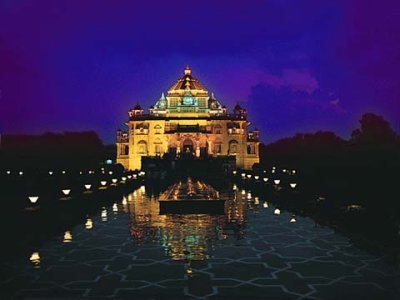
Kankaria Lake | |
A polygonal lake almost a mile in circumference, it was constructed in 1451 by Sultan Qutb-ud-Din. In the centre of the lake is an island-garden with a summer palace known as Nagina Wadi. The lake is now a popular recreational centre and is surrounded by parks, 'Bal Vatika', children's gardens, a boat club, natural history museum and a zoo. Lighting and special effects on the walkway and sumptuous food of the restaurants in the central garden make the lake a worthwhile place to visit or spend an evening. |
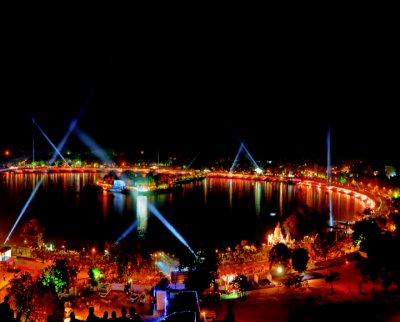
Adalaj Step Well This vav (well) has served as a resting place for hundreds of years for many pilgrims and caravans along their trade routes. Built in 1499, this five-storey step well was not just a cultural and utilitarian space, but also a spiritual refuge. There is an opening in the ceilings above the landing which allows the light and air to enter the octagonal well. The vav is a spectacular example of Indo-Islamic architecture and design. The harmonious play of intricate Islamic floral patterns seamlessly fusing into Hindu and Jain symbolism embody the culture and ethos of those times. | ||
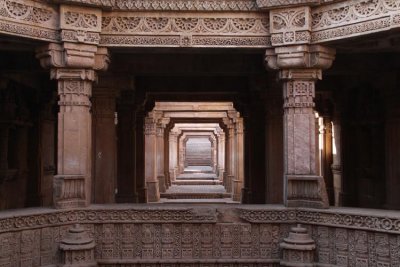
Hutheesing Jain Temple | |
This remarkably elegant temple created out of white marble has been sacred to many Jain families, generation after generation. It was built in 1848 A.D. as a dedication to the 15th Jain tirthankar, Shri Dharmanatha. Each part goes on increasing in dignity as we approach the sanctuary. Whether looked at from its courts or from the outside, it possesses variety without confusion and an appropriateness of every part to the purpose for which it was intended. The temple is spread over a sprawling courtyard, The main shrine on the east end reaches up into three stunningly carved spires and encircled by 52 small shrines dedicated to the various Tirthankars. There are large protuding porches with magnificently decorated columns. |
